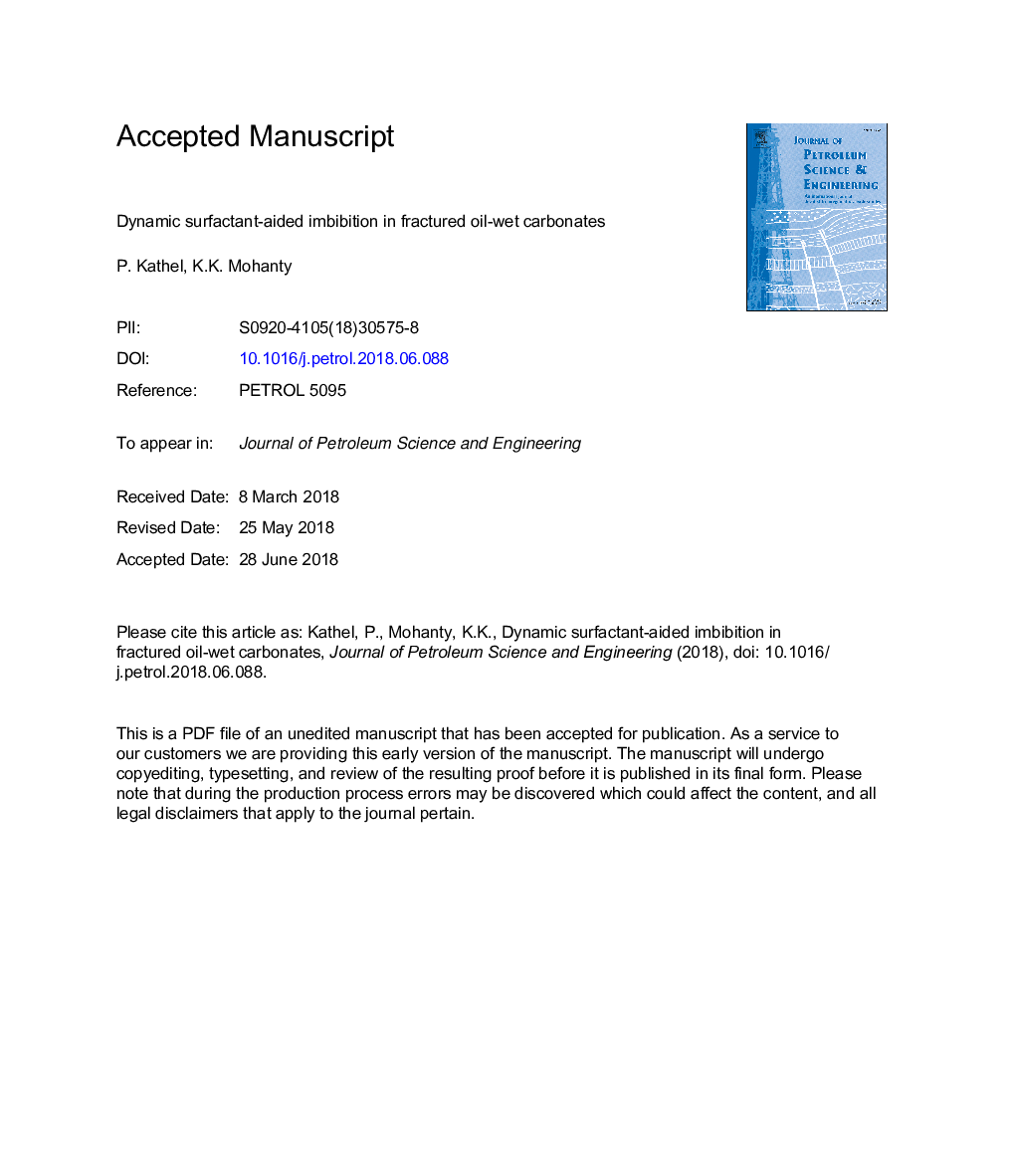| Article ID | Journal | Published Year | Pages | File Type |
|---|---|---|---|---|
| 8124522 | Journal of Petroleum Science and Engineering | 2018 | 43 Pages |
Abstract
Numerous studies based on static imbibition experiments at lab scale have established surfactant-aided imbibition as an improved oil recovery process for fractured oil-wet carbonate reservoirs. However, predicting performance at larger scales and at dynamic conditions (fluid flow through fracture) remains a challenge. In this study, experiments are performed on Estaillades Limestone and Texas Cream Limestone outcrop cores with varying height and diameter with permeability in the range of 8 mD to 150 mD to address this challenge. It is observed that dynamic imbibition process recovers oil faster than static imbibition. Imbibition experiments performed on cores with varying height and diameter show that oil recovery decreases with increasing diameter and height. A 3D fine grid mechanistic simulator was used to perform lab scale validation and analyze recovery mechanism. Numerically simulated velocity and saturation profiles demonstrated the recovery mechanism to be gravity dominated flow. A new scaling function is proposed for surfactant aided gravity dominated processes. Data with same boundary conditions, rock, fluids and varying dimensions can be correlated with the scaling function at early times with no fitting parameters involved. A good correlation is obtained with the data indicating the effectiveness of the scaling function. The scaling is applicable to both static as well as dynamic imbibition.
Related Topics
Physical Sciences and Engineering
Earth and Planetary Sciences
Economic Geology
Authors
P. Kathel, K.K. Mohanty,
